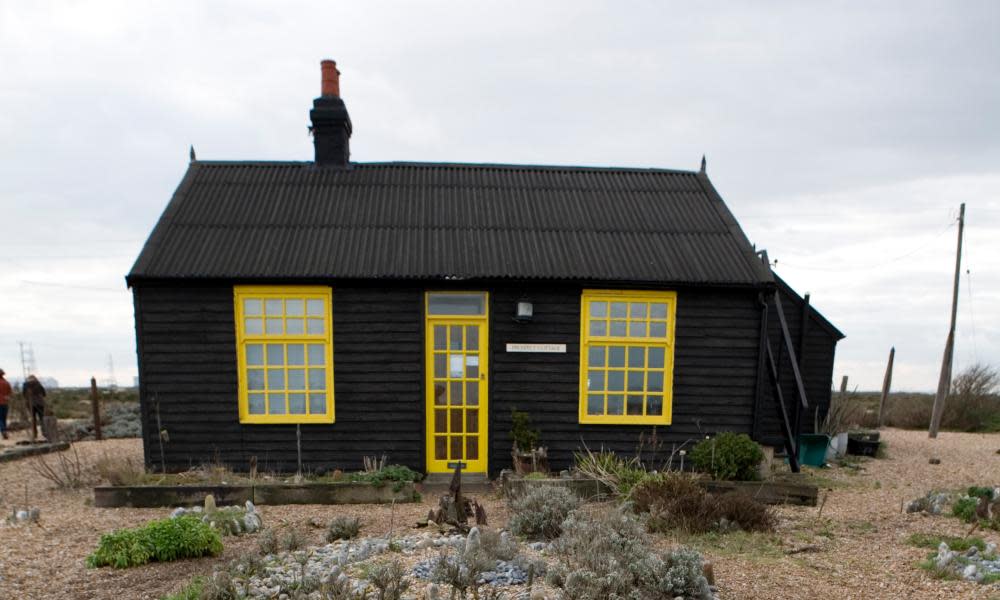Derek Jarman’s house provides a rare space for queer history. We must save it

In 1992 Derek Jarman, seriously ill with HIV, was asked what his memorial might be. “Oh, nothing,” he replied, “because film disappears, thank God.” It might seem strange to think of Jarman’s joy in the transience of his art in the context of a recently launched Art Fund campaign to raise £3.5m in 10 weeks to purchase and save Prospect Cottage, his home and workplace in Dungeness, Kent. There’s certainly an irony that more than a quarter of a century after his death an arts body is seeking to raise millions to preserve his house, when during his lifetime he faced a constant battle to finance his films.
Making Prospect Cottage a space to transform lives seems to me to be a wonderful way of furthering Jarman's legacy
Film-maker, painter, gardener, writer and activist, Jarman moved to the wind-blasted 12 sq miles (31 sq km) of pebbles, shingle and scrub that makes up the Dungeness peninsula in the late 1980s. Prospect Cottage wasn’t merely a place of respite, as he faced the physical ordeal of his illness. He also turned this modest dwelling into an artwork in its own right. Words from John Donne’s The Sun Rising cover an external wall, beyond which Jarman created a now world-famous garden where sculptures made from the flotsam and jetsam of the Dungeness shore were given as much prominence as the crocuses, holly, roses and poppies that he planted.
It was to be where he created some of his best work. The cottage and surrounding landscape provided the backdrop for his 1990 film The Garden, a visionary, psychedelic and angry polemic that retells the life of Jesus as a parable for the persecution of gay men during the Aids epidemic. His journal of these years was eventually published as a book called Modern Nature, a classic of contemporary nature writing that eschews the twee romanticism of the genre for an evocative and honest account of sexuality and illness set against the struggle to keep his garden alive.
Jarman’s creative output was diffuse. His films are rarely widely screened or shown on television, while the paintings he made at Prospect Cottage (small canvases loaded with black tar and items collected from the surrounding landscape) are only occasionally exhibited, and usually in commercial galleries before being sold to private collectors. Prospect Cottage, then, is the most accessible and easily identifiable manifestation we have of Jarman’s creative energies.
Since his death in 1994, the cottage was cared for and maintained by his partner, Keith Collins, who died in 2018. The intensity of the Dungeness weather that Jarman so beautifully captured both on celluloid and in words now threatens the very existence of his former home. Gales laden with salt spray and the heat and strong sunlight of the Kentish summer are enemies of the wooden building, while the increasing stream of visitors who wander through the garden and peer through the windows bring with them their own risks of wear and tear, souvenir-hunting or even robbery.
In the final months of his life, Collins approached the artist Tacita Dean with his concern for the future of the property. Conversations were had, and last week the Art Fund, the Tate gallery and the local arts organisation Creative Folkestone launched their crowdfunding campaign to preserve the cottage and its contents for future generations. Yet memory and cold buildings preserved in aspic are not enough. What makes the plans for Prospect Cottage more than an attempt to turn it into a heritage tourist attraction, cream teas on hand, is an ambitious proposal to open it as a creative retreat for artists, filmmakers, writers and activists.
Related: The trespass trap: this new law could make us strangers in our own land | George Monbiot
This is especially good news for the LGBTQ+ community. Prospect Cottage has become such a place of pilgrimage over the years in part because there are so few physical spaces we can claim as a part of our cultural history. While the National Trust has done great work in recent years highlighting the untold LGBTQ+ pasts of some of its properties, Jarman’s home would be one of the first buildings preserved for the nation that has a radical and explicitly queer narrative at its heart. Jarman the activist was heavily involved in the gay rights movement, and fought homophobia until his dying day. His writings are full of accounts of travelling from Dungeness to London to participate in marches.
For many people, late-night furtive viewings of Jarman films on Channel 4 in the early 1990s helped us see the world differently. I would never have written my book Out of the Woods without Jarman’s inspiration. Making Prospect Cottage a space that continues to transform lives, especially for those who might see themselves as being on the margins of society or creative culture, seems to me to be a wonderful way of furthering his legacy. As his longtime collaborator Tilda Swinton pointed out at the launch of the Art Fund campaign, Jarman was always happy for members of the public to take cuttings from the plants growing in his garden, take them home, and from them create new life.
• Luke Turner is an author. His latest book is Out of the Woods

 Yahoo News
Yahoo News 
